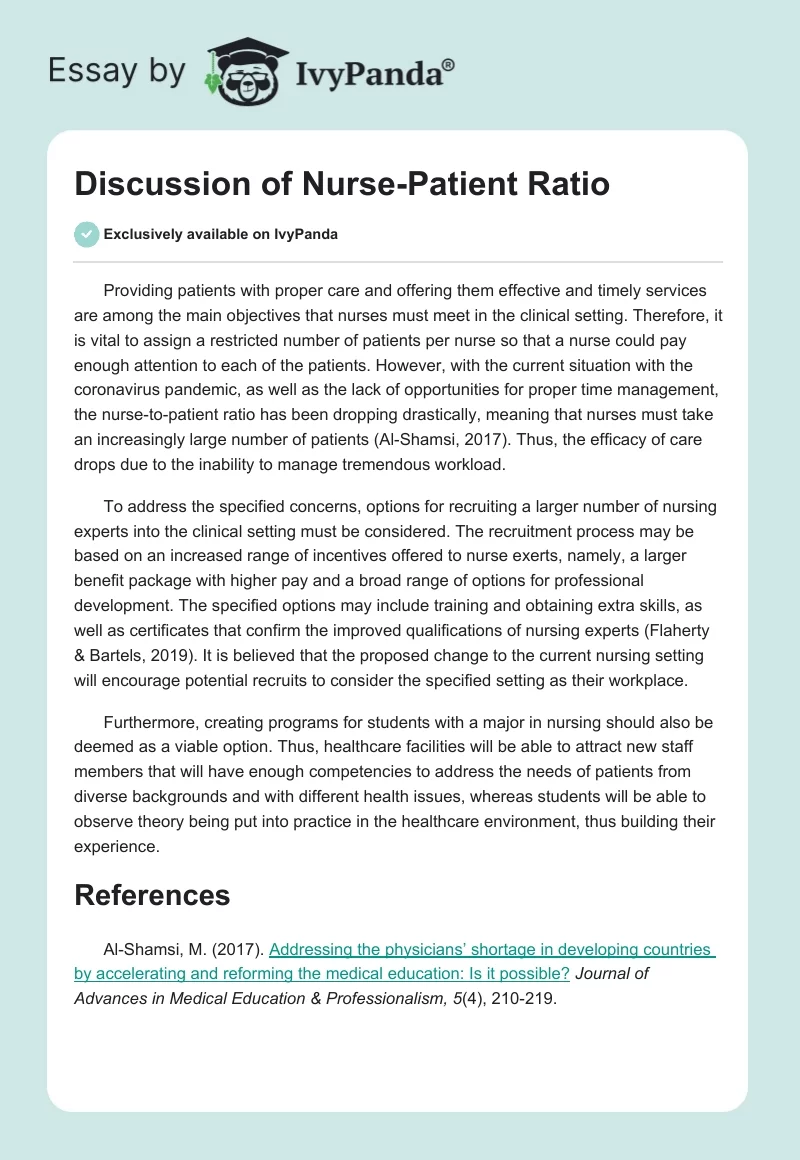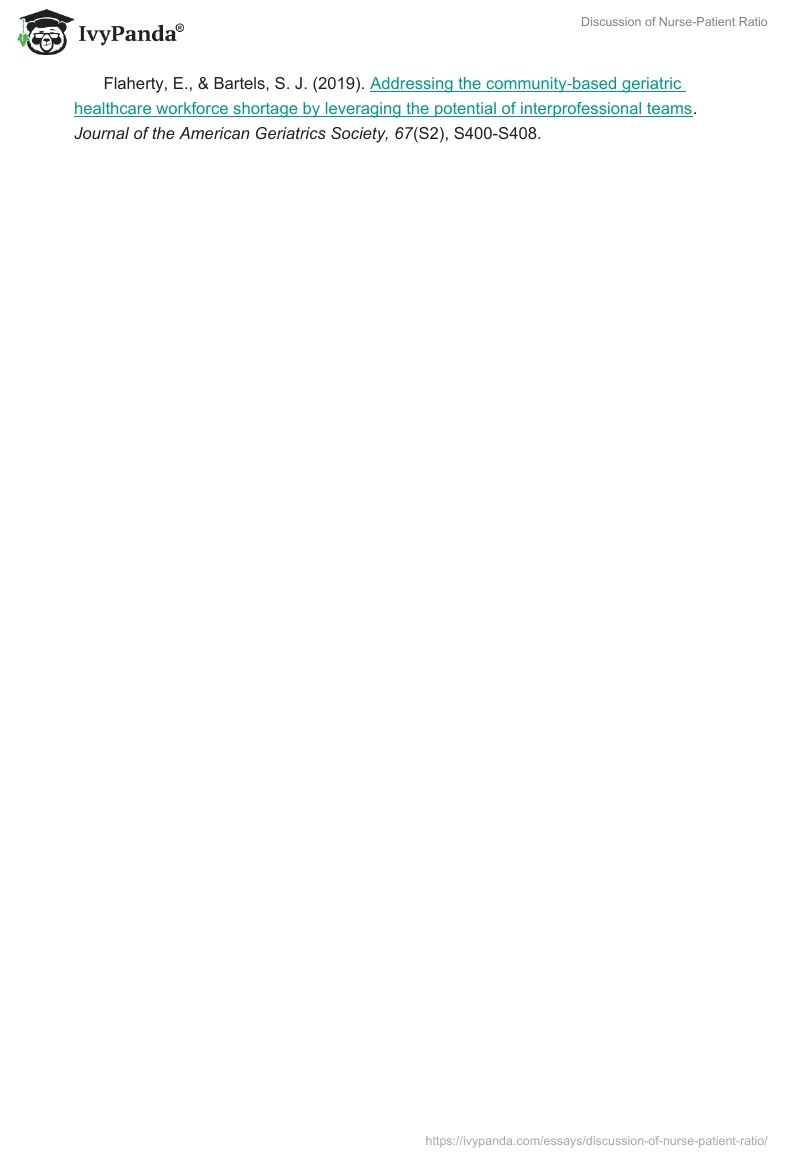Providing patients with proper care and offering them effective and timely services are among the main objectives that nurses must meet in the clinical setting. Therefore, it is vital to assign a restricted number of patients per nurse so that a nurse could pay enough attention to each of the patients. However, with the current situation with the coronavirus pandemic, as well as the lack of opportunities for proper time management, the nurse-to-patient ratio has been dropping drastically, meaning that nurses must take an increasingly large number of patients (Al-Shamsi, 2017). Thus, the efficacy of care drops due to the inability to manage tremendous workload.
To address the specified concerns, options for recruiting a larger number of nursing experts into the clinical setting must be considered. The recruitment process may be based on an increased range of incentives offered to nurse exerts, namely, a larger benefit package with higher pay and a broad range of options for professional development. The specified options may include training and obtaining extra skills, as well as certificates that confirm the improved qualifications of nursing experts (Flaherty & Bartels, 2019). It is believed that the proposed change to the current nursing setting will encourage potential recruits to consider the specified setting as their workplace.
Furthermore, creating programs for students with a major in nursing should also be deemed as a viable option. Thus, healthcare facilities will be able to attract new staff members that will have enough competencies to address the needs of patients from diverse backgrounds and with different health issues, whereas students will be able to observe theory being put into practice in the healthcare environment, thus building their experience.
References
Al-Shamsi, M. (2017). Addressing the physicians’ shortage in developing countries by accelerating and reforming the medical education: Is it possible?Journal of Advances in Medical Education & Professionalism, 5(4), 210-219.
Flaherty, E., & Bartels, S. J. (2019). Addressing the community‐based geriatric healthcare workforce shortage by leveraging the potential of interprofessional teams. Journal of the American Geriatrics Society, 67(S2), S400-S408.


